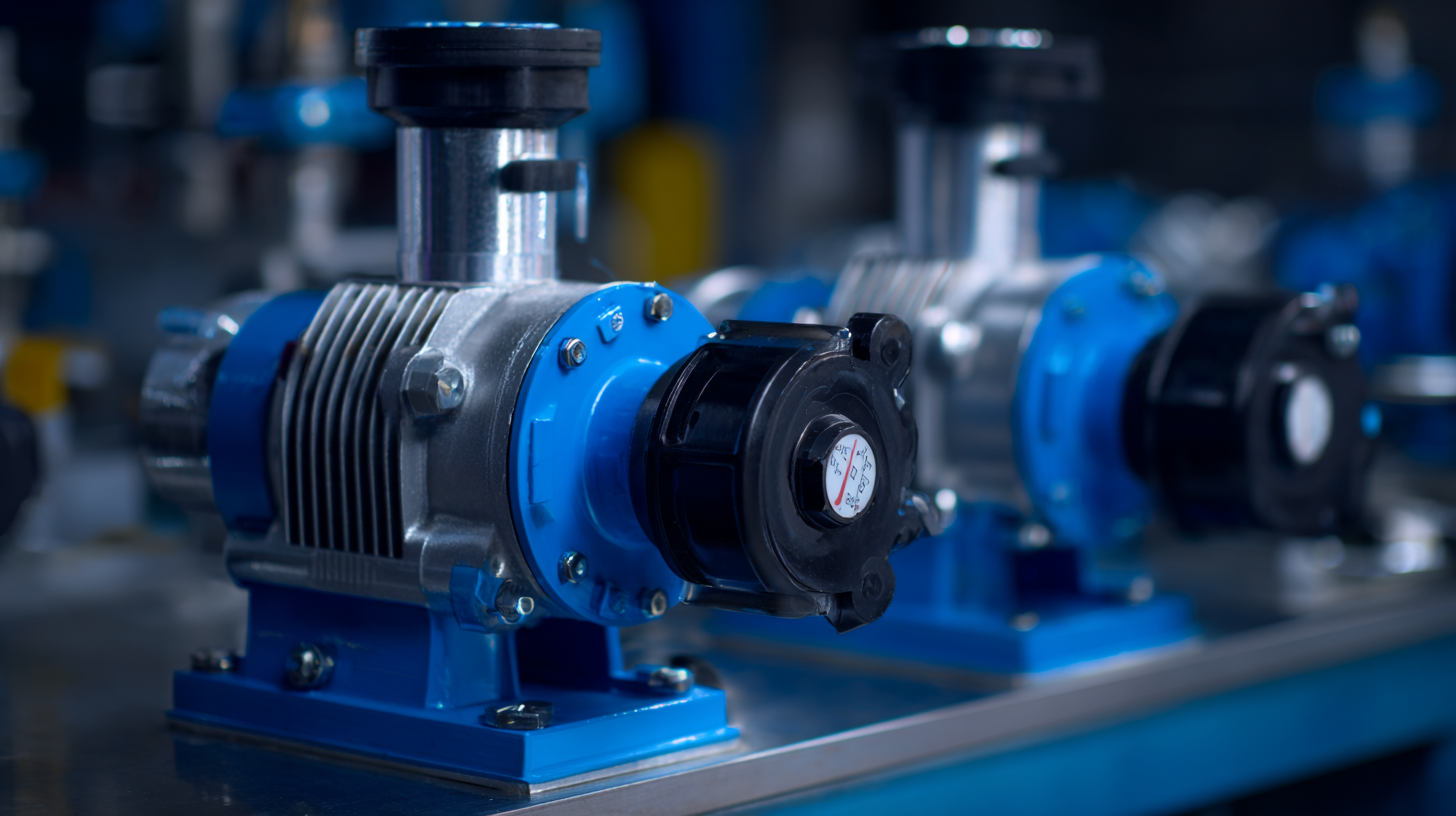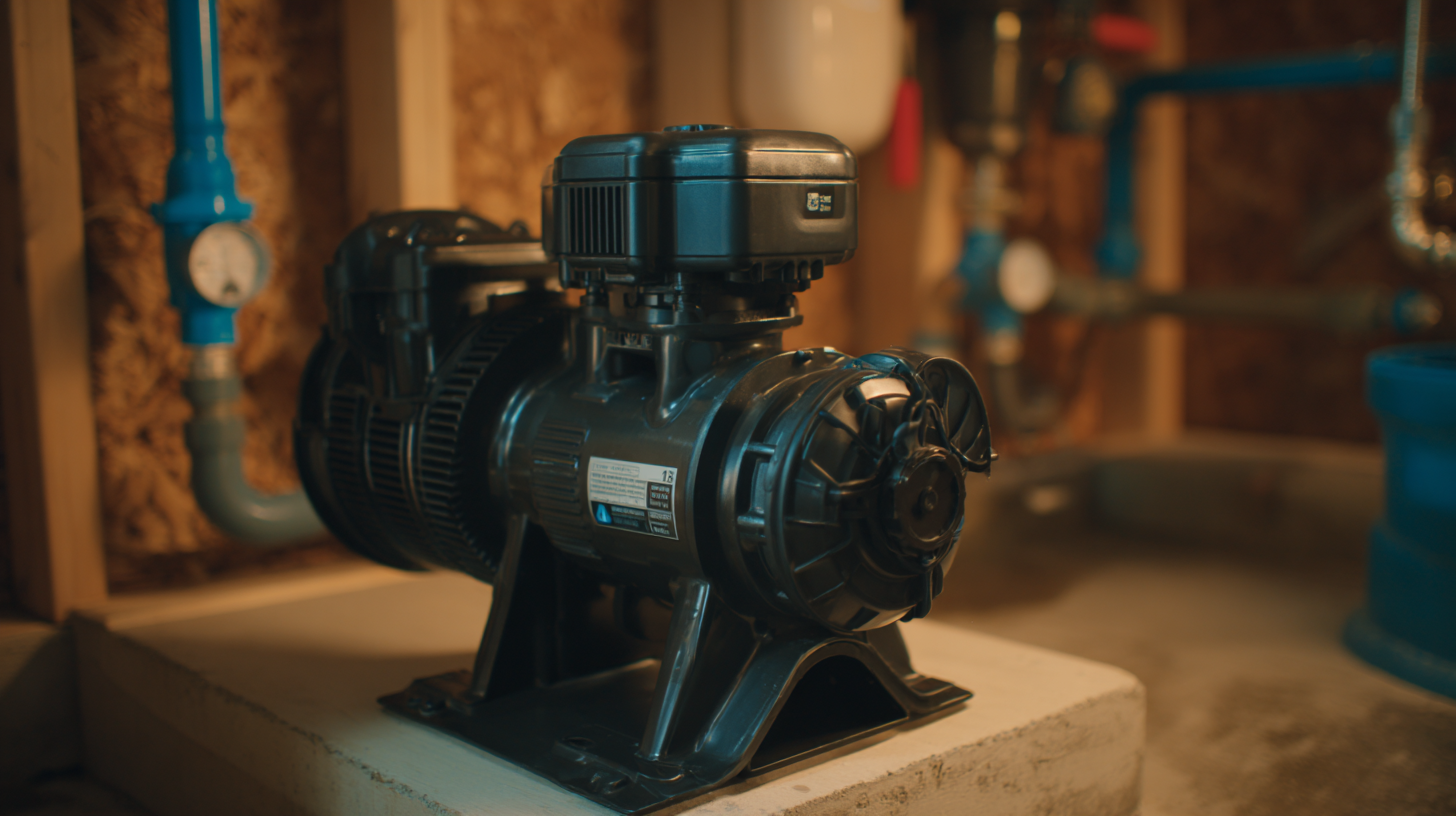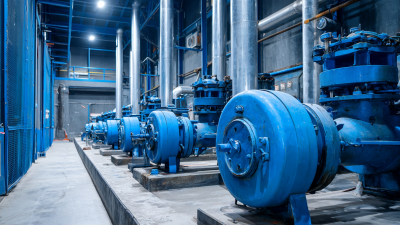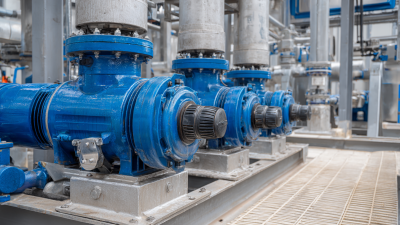
Universal Pumping | High Pressure Pumps
High Pressure Pumps for Difficult to Pump Slurry, Sludge, and Food Waste.
Pressure pumps play a critical role in various applications, from domestic water supply to industrial processes, showcasing their versatility and importance in modern society. According to the Global Pressure Pump Market Report 2021, the market is projected to reach USD 7.4 billion by 2027, growing at a CAGR of 5.2%. This growth is driven by increasing demands for efficient water management systems and the rise of smart infrastructure solutions. Understanding the operational principles and technological advancements of pressure pumps is essential for both homeowners and industry professionals to maximize efficiency and performance. By unlocking the power of pressure pumps, users can enhance their water distribution systems, ensuring reliability and sustainability. This article will explore key insights into the functioning, maintenance, and selection of pressure pumps to empower users in making informed decisions, whether for residential needs or large-scale industrial applications.

Pressure pumps are essential devices used in various applications, both in homes and industrial settings. At their core, pressure pumps are designed to move fluids under pressure, allowing for efficient water distribution, increased water flow, and even specific applications such as irrigation, heating, and cooling systems. The working principle of a pressure pump involves converting mechanical energy into hydraulic energy by drawing in fluid and expelling it with force. This process typically involves a motor that drives an impeller or diaphragm, creating a pressure differential that facilitates fluid movement.
Understanding the types of pressure pumps is crucial for selecting the right one for your needs. Common types include centrifugal pumps, diaphragm pumps, and submersible pumps, each serving different functions and efficiency levels. Centrifugal pumps are widely used due to their effectiveness in moving large volumes of water with minimal energy consumption, while diaphragm pumps are ideal for handling viscous liquids. Submersible pumps, on the other hand, are specially designed to operate underwater, making them perfect for well or groundwater applications. By grasping these fundamental concepts, you can better appreciate how pressure pumps operate and identify the best solutions for your specific requirements.
This chart illustrates the performance of pressure pumps used across different sectors. The data indicates how many gallons per minute (GPM) each type of pressure pump typically achieves, showcasing their efficiency based on application.
When selecting a pressure pump for home use, understanding its key features is critical for ensuring efficiency and reliability. One prominent option on the market is a variable speed pump, which offers consistent water pressure throughout the home. This type of pump not only adjusts its output based on the demand, but also enhances energy efficiency by reducing power consumption during low-demand times. Such adaptability makes it an essential choice for homeowners seeking both performance and sustainability.

Another important aspect to consider is the pump's ease of installation and maintenance. A user-friendly design can significantly simplify the setup process, allowing homeowners to enjoy uninterrupted water access without professional assistance. Furthermore, features like integrated diagnostics can help in identifying issues before they escalate, ensuring the longevity of the pump. In summary, key features such as variable speed capability, energy efficiency, and ease of maintenance are paramount when choosing the right pressure pump for home application.
When selecting pressure pumps for industrial applications, it's crucial to consider factors such as flow rate, pressure output, and energy efficiency. Industrial environments often require robust equipment that can withstand high demands and continuous operation. By understanding your specific needs—whether for water transfer, cleaning, or process applications—you can better match the right pump to your operations.
Tips: Always evaluate the total cost of ownership, which includes purchase price, maintenance, and energy consumption over time. Additionally, ensure that the pump's materials are suitable for the fluids being handled to prevent corrosion and wear.
Additionally, look into the manufacturer's reputation and customer support services. A reliable manufacturer not only provides quality pumps but also offers ongoing support and maintenance resources. This can be invaluable in minimizing downtime and ensuring optimal performance.
Pressure pumps play a crucial role in both home and industrial settings, ensuring the efficient movement of water and other fluids. To maximize their performance and longevity, regular maintenance is essential. One key aspect is cleaning the pump regularly. Debris buildup can lead to clogs that hinder functionality, so make it a habit to inspect and clean filters and components frequently.
Another important tip is to check the seals and connections regularly. Worn-out seals can cause leaks, ultimately affecting pressure and performance. Replacing these parts when necessary helps maintain optimal functioning. Additionally, consider the pump's operating environment; extreme temperatures can impact its operation, so ensuring proper insulation or shelter can go a long way in extending its lifespan.
Lastly, monitoring the pump’s performance and addressing any unusual noises or vibrations immediately can prevent more significant issues. By staying attentive to these maintenance tips, you can ensure that your pressure pump continues to serve your needs effectively—be it in your home or an industrial setting.

When troubleshooting pressure pumps, it's essential to identify common issues that can affect both home and industrial applications. Many users face problems such as irregular pressure, overheating, and operational noise. According to recent consumer reports, appliances, including pressure pumps, often encounter failures related to electrical components and mechanical wear, which can lead to inefficient operation (Consumer Reports, 2008-2018). Regular maintenance and prompt identification of these issues can prevent costly repairs.
For instance, if a pressure pump fails to start, it could be due to a burned-out motor or an electrical fault. In such cases, checking power connections and fuses can quickly determine the source of the problem. Additionally, noise can signify loose fittings or damaged impellers, both of which are straightforward to fix with minor repairs. A guide to the most frequent failures shows that many users can resolve these problems themselves, sparing time and service costs (Industry Insights). Being aware of these troubleshooting tips can significantly enhance the reliability of pressure pumps, ensuring they operate smoothly for both residential and industrial uses.
| Dimension | Home Use | Industrial Use | Common Issues | Troubleshooting Tips |
|---|---|---|---|---|
| Pressure Range | 30 - 60 PSI | 70 - 150 PSI | Low Pressure | Check for blockages or leaks |
| Flow Rate | 2 - 4 GPM | 5 - 15 GPM | Inconsistent Flow | Inspect for air leaks and replace worn seals |
| Power Supply | 110 V AC | 220 V AC | Pump Not Starting | Ensure power source is active and check connections |
| Pump Types | Diaphragm Pump | Centrifugal Pump | Overheating | Allow the pump to cool and ensure proper ventilation |
| Maintenance Frequency | Every 6-12 Months | Every 3-6 Months | Unusual Noises | Investigate for loose components or wear |






Universal Pumping
625 Apache Trail
Woodstock, GA 30189
Mon - Fri | 9:00 AM - 5:00 PM
Universal Pumping is staffed with industry professionals with 20-45 years experience with high pressure pumping systems. We represent only the “elite producers” in pump manufacturing: Britain’s EMS and Germany’s EMMERICH. Our engineering and manufacturing approach is conservative, and we do not use “guess work” in the design or sales of our pumping and filtration equipment.



